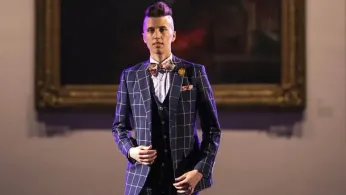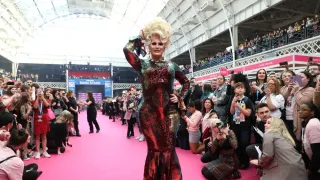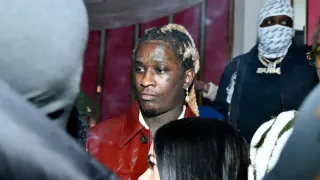
9 hours ago
Techno-Fashion and Queer Protest: How dapperQ’s New York Fashion Week Show Is Shaping Queer Style in 2025
READ TIME: 4 MIN.
In September 2025, the pulse of queer New York beats loudest at the Brooklyn Museum, where dapperQ—one of the world’s leading queer style collectives—is set to celebrate its 10th Annual New York Fashion Week Show. This milestone event is more than a fashion show: it is a living ritual, a gathering where queer, transgender, and nonbinary designers, models, and performers carve out space for themselves and their communities in one of the world’s most high-profile fashion arenas .
Founded to challenge and expand traditional ideas of gendered fashion, dapperQ has grown into a vital force in queer culture. Its annual runway show is a highlight of Fashion Week and a beacon for those who seek affirming representation on and off the catwalk. This year’s event, staged at the Brooklyn Museum on September 11, brings together designers whose work reflects the spectrum of queer identity—where fluidity, authenticity, and protest are woven into every stitch .
The show’s significance lies not just in its dazzling looks but in its message. In an industry where cisnormative and heteronormative standards still dominate, the dapperQ runway is a statement: queer people deserve to see themselves not only reflected in fashion but celebrated for their difference.
One of the defining trends of 2025 is the integration of technology into fashion, particularly within queer communities. Clothes embedded with smart screens, color-changing fabrics that respond to body temperature, and shoes that record every step are not mere novelties—they are extensions of the queer body, amplifying visibility, safety, and expression .
For queer people, especially those who experience marginalization, wearable tech serves multiple purposes. It can be self-defense—a jacket that lights up to draw attention in dark streets—or protest, with digital slogans that shift to match the mood of the march or the club. Slogan shirts, long a staple of protest fashion, are now programmable, offering a platform for instant political commentary or celebration of queer joy .
Among the designers and models making noise this month is MI Leggett of Official Rebrand, whose gender-neutral and sustainability-focused collections are earning accolades for their boldness and inclusivity. Leggett’s work, seen on this year’s dapperQ runway, transforms reclaimed garments into expressive pieces that prioritize personal narrative over binary norms . Other indie labels like Berriez and Phlemuns, also featured at the event, push boundaries with collections that remix nostalgia, streetwear, and size inclusivity—proving that queer fashion is both accessible and aspirational .
The models walking the dapperQ show reflect the diversity of today’s queer communities: queer women, transgender people, nonbinary folks, and others whose bodies and identities have often been excluded from mainstream fashion. On the runway, they reclaim space with confidence—sometimes in chunky Doc Martens, sometimes in shimmering mesh, often in clothes that blur masculine and feminine and everything in between .
For many attendees, the dapperQ runway is more than a show—it is a ritual of affirmation and connection. The act of assembling, watching, and cheering as each model walks is a powerful reminder of queer resilience and creativity. The looks themselves are a form of coded language: platform boots, pastel buzzcuts, mesh tops layered over harnesses, and glitter makeup all signal belonging and solidarity .
This year’s event also foregrounds the importance of sustainability and ethical production, with many featured designers using upcycled materials and transparent supply chains. For queer communities—who have long been at the margins of both fashion and environmental movements—these practices are not just trends, but commitments to a more just and inclusive future .
Queer fashion in 2025 is inseparable from queer language and subcultural ritual. Slogans on programmable shirts reference not just politics but in-group slang; “dressing for the female gaze” and “cruising couture” are phrases that have entered the mainstream thanks to queer designers and influencers .
Meanwhile, the resurgence of styles rooted in queer history—like the practical, protest-ready footwear favored by lesbians and nonbinary people in the 1970s and 1980s—shows how today’s trends are always in dialogue with the past. These choices are never just aesthetic; they are reminders that fashion can be both armor and invitation .
While New York remains a hub, similar rituals are emerging worldwide. In Milan, designers like Luca Magliano are making headlines for collections inspired by cruising culture and unapologetic queer intimacy, echoing the same themes of protest and self-love that define dapperQ’s show . From the Met Gala to the streets of Brooklyn, queer fashion is asserting itself as a global language—one that is political, joyful, and always in flux .
As dapperQ’s 10th Annual New York Fashion Week Show demonstrates, the queer community’s relationship to fashion is not just about aesthetics. It is about survival, celebration, and visibility. In 2025, every sequin, slogan, and smart screen is a testament to the power of queer creativity—a reminder that when queer people claim space on the runway, they are also claiming space in the world .






